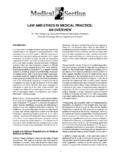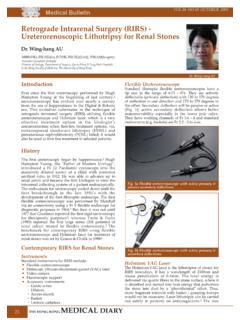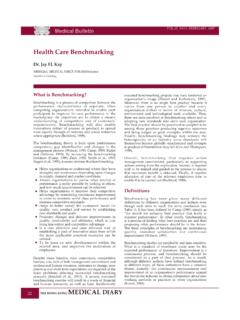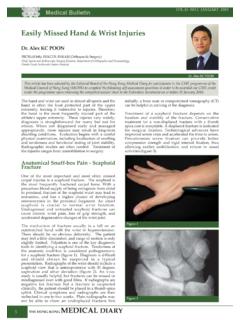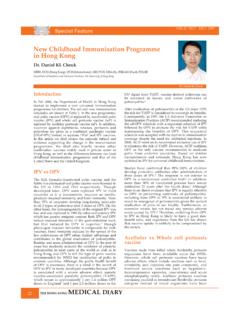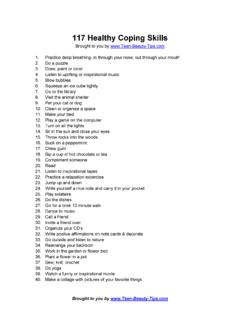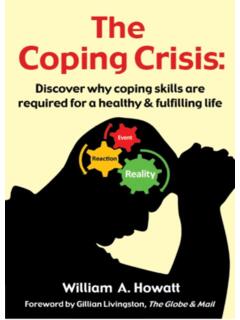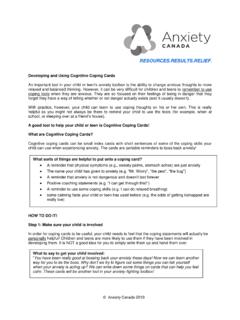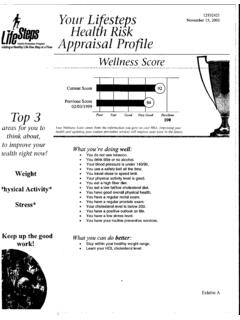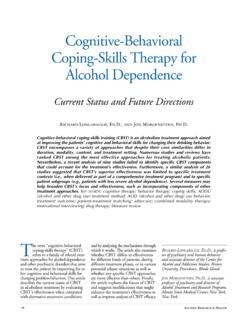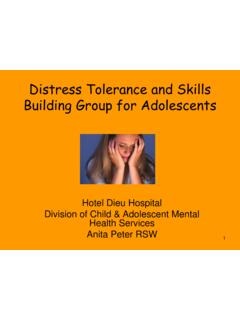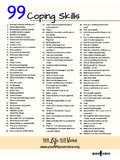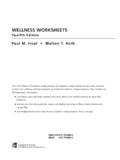Transcription of Coping Strategies in the Face of Death - fmshk.org
1 STIMULUSBENIGNHARM, LOSS, THREATSTRESSORIRRELEVANTPOSITIVEK elly and Sullivan 1992 COPINGSEEKING INFORMATIONTAKING DIRECT ACTIONDOING NOTHINGWORRYINGPRIMARY APPRAISALSECONDARY APPRAISALF igure 1: Stress - Coping ParadigmDENIAL avoidancefearfulnessDisengagementdistanc ingJo Cooper and David B CooperCOPING STRATEGIESHELPLESSNESSHOPELESSNESSACCEPT ANCESelf controlfatalismFIGHTING SPIRITSeek social support / informationPositive reappraisalPositive focusFigure 2: Coping Strategies with Cancer DiagnosisCoping Strategies in the Face of DeathDr Lam Wai Man,Pulmonary and Palliative Care Unit, Haven of Hope : Medicine Doctors MeetingNewsletter of Hong Kong Society of Palliative MedicineHKSPM Newsletter 2009 Sep Issue 2 P28 Coping Strategies in the Face of Death Introduction:Theoretical background to stress, Coping and deathCoping can be defined as a process by which a person deals with stress, solves problems or makes decisions.
2 1 Stress has been defined as a particular relationship between a person and the environment that is appraised by the person as taxing or exceeding his or her resources and endangering his or her well-being. 2 According to the stress- Coping paradigm as developed by Lazarus, an individual will engage in two processes of appraisal when confronted by a stimulus that is potentially stressful primary and secondary appraisal. 3 Primary appraisal determines whether a stimulus is perceived to represent a harm, loss or threat ( whether it is perceived to be a stressor) while secondary appraisal determines how the individual responds to and deals with the stressor ( a process of Coping ).
3 The stress- Coping paradigm is represented in Figure Different individual appraises a stimulus and his/her own resources to cope with the stressor differently. Therefore, the same stimulus will lead to different Coping responses in different with advanced cancer and their families are often facing enormous stress and use many different and varied approaches to reduce emotional distress. However, each individual travels a unique life journey. Each person responds differently to difficulties and copes in his or her individual patients diagnosed with cancer, four primary psychological responses have been identified that can be grouped into four themes:1.
4 Denial2. fighting spirit3. acceptance4. (Figure 2)As shown in Figure 2 6, Coping is seen as a dynamic and fluctuating process and people use a range of Coping Strategies , depending on the situation. It is important not to permanently place an individual into any one Coping strategy as each individual s Coping may change over dynamic nature of an individual s Coping with one s own impending Death from cancer is also demonstrated in a qualitative study in 20 Swedish patients on how they reflected and acted when they tried to create Newsletter of Hong Kong Society of Palliative MedicineHKSPM Newsletter 2009 Sep Issue 2 P29 Coping Strategies in the Face of Death helpful Strategies in the presence of their own impending deaths and how the Strategies had served their purposes.
5 7 Their Coping efforts could be visualized as a cognitive and emotional pendulum, swinging between the extremes of life and Death . (Figure 3) During the swings of the pendulum, the individuals used every means available: their own resources, other people, animals, nature, a transcendent power, hope, imagination and magical thinking. They strove to find factors that fitted their conceptual system and supported their inner balance and structure, all to keep Death at a discreet distance and preserve their links to life. These links were togetherness, involvement, hope and continuance, and they served as a shield against hurtful feelings connected to their impending Stories The following three real patient stories illustrated how different individuals were Coping with their terminal illnesses.
6 By reflecting on these encounters, we might gain a deeper understanding on the needs of patients and their families, and how we as palliative care workers could fulfill our mandate of improving their quality of life during this highly stressful period in their lives. The patients names were changed to ensure 1 Miss Chu, a 39-year-old office lady, single but lived with a constant boyfriend for years, and a newly converted Christian, had been diagnosed to have ovarian cancer with intraperitoneal metastases. Palliative surgery was done and chemotherapy was suggested. However she declined chemotherapy and sought help from a herbalist. One year later, she presented again with large pelvic recurrence.
7 One course of chemotherapy was given but she developed complete small bowel obstruction which did not resolve with medical treatment. She was then referred to our palliative care unit. On arrival to the palliative care ward, she looked dehydrated and cachexic and was very weak physically. Palliative Performance Score was only 30%. She was aware of the diagnosis and prognosis but she avoided to touch on Death and dying issues. I do not think about life and Death issues at this moment, she said, and I do not know how to face the future or even today. She could not make decisions regarding Cardiopulmonary Resuscitation (CPR) and delegated treatment decision making to her boyfriend.
8 A family meeting was held involving her boyfriend, mother and two brothers. All were shocked to hear about the poor prognosis and they thought that the patient was transferred to our unit for rehabilitation. They found it hard to accept her impending Death and asked for active treatment. After an explanation on the poor condition and the palliative approach that our team would offer, the patient s boyfriend cried intensely while her brother agreed to our approach for comfort care. Do-Not-Resuscitate (DNR) was reluctantly accepted. Sepsis due to urinary tract infection developed and she became semiconscious. Her boyfriend asked for various types of active interventions such as albumin infusion, parenteral nutrition, blood transfusion, and herbal medicine.
9 He did not want to miss any possibility of making her survive longer. Intravenous antibiotics were given and her conscious state improved. Hoping to know the patient s view, the doctor had a talk with her about her physical condition, poor prognosis, her goals and the risks and benefits of various life-sustaining interventions. She expressed a wish to prolong life as long as she remained alert, but preferred comfort care if she became ShieldedTogethernessInvolvementHopeConti nuanceUnshieldedIsolationExclusionResign ationAnnihilationLIFEDEATHF igure 3: Coping Strategies in the presence of one s own impending Death from cancerNewsletter of Hong Kong Society of Palliative MedicineHKSPM Newsletter 2009 Sep Issue 2 P30 Coping Strategies in the Face of Death unconscious.
10 She preferred not to make decisions on life-sustaining treatment then. The clinical psychologist and the chaplain were involved in psycho-spiritual support of Miss Chu and her boyfriend. She was baptized according to her request. From their observation and assessment, her mood remained stable and good, and she expressed no worry or other negative emotions. However, her boyfriend was observed to have intense emotions and stress, and he was physically and emotionally exhausted. Miss Chu s condition deteriorated fast and died after two weeks. Cardiopulmonary resuscitation (CPR) was not performed. Her boyfriend was still ambivalent about the DNR decision and even requested our team to do CPR after Miss Chu s deceased body had been transferred to the on Patient 1 Miss Chu was aware of the prognosis and accepted comfort care in case she became terminally ill and unconscious.


